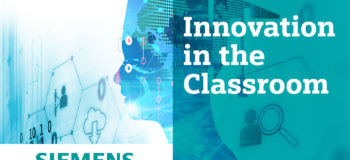How the University of Pretoria Uses Simcenter to Help the Local Community

In many countries like South Africa, universities fill the crucial role of improving safety conditions for major industries like mining. Outfitting research institutions such as the University of Pretoria with the newest technology is essential to help spur growth and reap the benefits of digitalization.
“We want to tackle engineering problems that affect the South African community and its operators,” said Stephan Heyns, professor and director of the Centre for Asset Integrity Management at the University of Pretoria.
One of those problems? The noise coming from mining machines. Coupled with environmental noise and noise from explosions, miners often experience hearing loss. A study done by the National Institute for Occupational Safety and Health in Pennsylvania found that this was the case even in 1976. Then, it was estimated that 70-90% of miners would develop hearing loss by age 60. More recent data shows that the situation is not getting better.
Utilizing Siemens Software
To help fix the problem of hearing loss, the University of Pretoria looked to invest in an sound source localization device. The use of an SSL device could help them better understand and solve some of the noise issues, while also giving them the ability to do additional research and optimization. The Simcenter™ Sound Camera™ emerged as the best option for their research. Simcenter combines hardware and software to efficiently localize and quantify sound sources for all types of sound fields. Simcenter is part of Xcelerator, a comprehensive and integrated portfolio of software and services from Siemens Digital Industries Software. After the university received their Simcenter Sound Camera, Siemens assigned experts to provide training to the university’s research engineers. Soon after, their testing setup was complete, and work began on the mining machines.
Making an Impact
With the addition of Simcenter, the University of Pretoria was able to find abnormalities in machine designs. They could also pinpoint noisy machines using a sound map. Not only is this process quicker, but it can pick up nuances that a manual worker might miss. Simcenter has also made data available almost instantly, spending up their work and helping them spend their time more efficiently.
Of the project Heyns said, “It’s not only about making a quieter machine, but also about taking care of the operators that use it. We have done some work and we are on the right track, but we want to improve the type of measurements we do with the help of Simcenter testing solutions to improve our tests and our mining experiences.”
In the future, the University of Pretoria plans to use Simcenter solutions to do research on predicting noise levels generated by the mining machines underground. They would also like to test the same piece of equipment in the environment of a gold mine, iron mine, and diamond mines.


